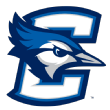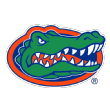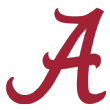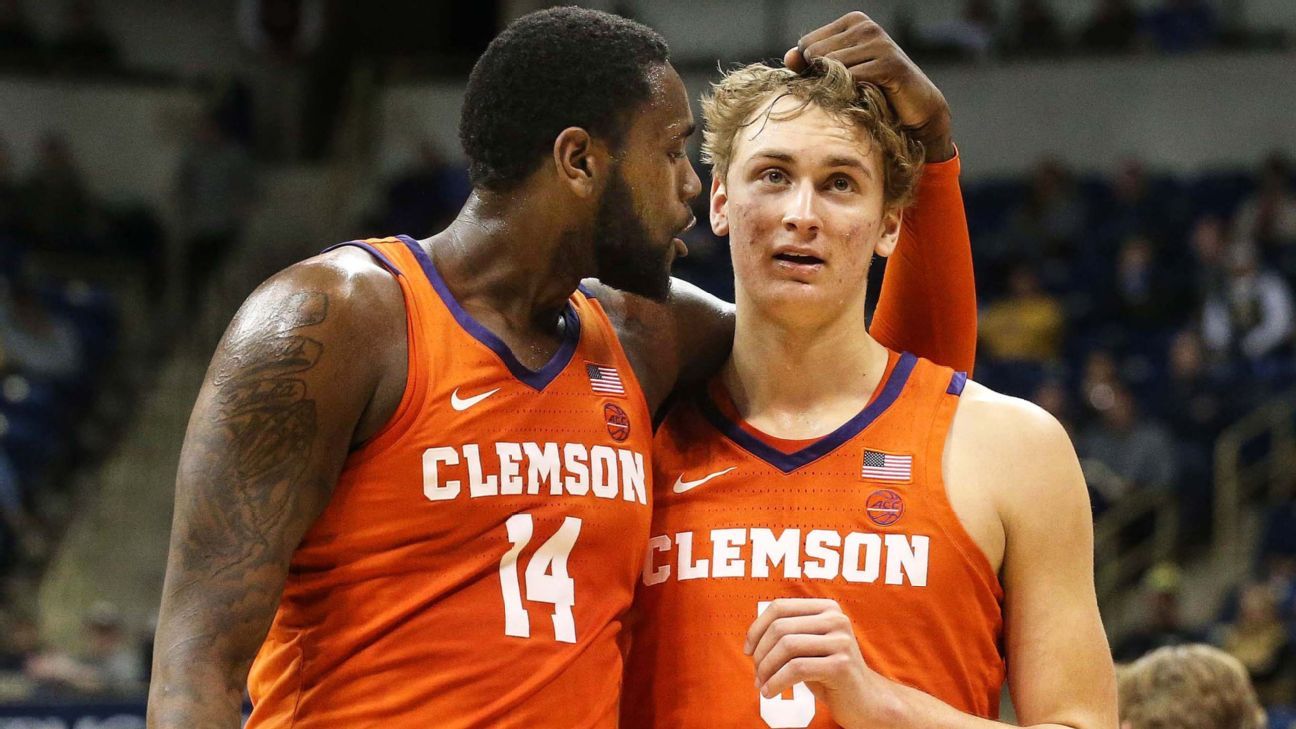Editor’s note: The NCAA tournament Bubble Watch has been updated through relevant games of Monday, March 11.
The unique March hybrid of tumult and high stakes known as Champ Week is upon us, and Bubble Watch is so very here for all of it.
Here’s a handy viewer’s guide to the whole chaotic panoply….
Best conference tournaments for bubble drama:
1. Big East
Is this even up for discussion? You can’t swing a cat at Madison Square Garden without knocking over a teeming horde of bubble teams.
Seton Hall is likely safe no matter what at this point (along with of course Marquette and Villanova), but any other team not named Butler, DePaul or Providence is trying desperately to either stay in the field (St. John’s) or play its way there (Creighton, Xavier and Georgetown).
2. ACC
How serendipitous! Clemson and NC State have been paired together in the bracket in Charlotte, and the two will face off against each other Wednesday at noon Eastern on ESPN. The loser of that game is looking at some serious bid peril.
A loss for the Tigers, for example, would drop Brad Brownell’s team to 1-10 in nQuad 1 games. Is that really going to get it done? Put another way, giving that profile a bid will (Bubble Watch can see it all now) be seen as validating every categorical indictment in the book about mediocre power-conference teams being coddled at the expense of feisty and deserving mid-majors.
Meanwhile, the Wolfpack can’t take anything for granted either. Kevin Keatts’ team also swung and missed on its best big-win opportunities in conference play (0-7 in ACC Quad 1 games), though the victory in Raleigh against Auburn is appreciating in value.
3. Big Ten
How serendipitous (again)! Ohio State is plummeting down the same elevator shaft where Indiana is ascending doggedly. The Buckeyes and the Hoosiers will smack into each other Thursday afternoon in Chicago, and the loser may need some capricious committee wackiness (seen with perhaps one bid a year) in order to make the field of 68.
4. Big 12
You can thank Texas for 100 percent of the bubble drama to be had in Kansas City. The Longhorns, for some inscrutable reason, decided to play like a bid was already in hand against TCU in the season finale, and now we have a situation at the cut line.
If the Horns lose in the Big 12 tournament against Kansas, they’ll be 16-16. Is a 16-loss record really going to get it done for the first time in NCAA at-large-bid history?
For their part, the Horned Frogs are back in this thing after pulling off the upset in Austin. Jamie Dixon’s team needs newer and better wins, however, now that their “We swept Iowa State!” talking point has lost some luster. TCU will begin that quest Wednesday evening against Oklahoma State (7 p.m. ET, ESPNU).
Last thing. In addition to bubble drama, keep an eye on those oh-so-sneaky bid thieves nationwide. Bubble Watch is looking at you, Pac-12 and Atlantic 10 tournaments.
Here’s how we’re projecting the bubble right now….
Here’s how we’re projecting the bubble right now …
Bids from traditional “one-bid” leagues: 25 teams
Locks: 32 teams
The bubble: 27 teams for 11 available spots
Should be in: 5 teams
Work to do: 22 teams
ACC | Big 12| Big East | Big Ten | Pac-12 | SEC | American | Others
ACC
Locks: Virginia, Duke, North Carolina, Louisville, Florida State, Virginia Tech
Should be in: Syracuse
Work to do: NC State, Clemson

Should be in

Jim Boeheim’s program has a history of close shaves on Selection Sunday in recent years, but 2019 should be a somewhat more sedate affair. Syracuse is now in the clubhouse, so to speak, at 19-12 and 10-8 in the ACC. The Orange won at Duke, and the victory at home against Louisville also qualifies as Quad 1. (The win at Ohio State, though fast depreciating in value, will go in the books as a third Quad 1 victory.) If the selection were held today, Boeheim’s group would in all likelihood be looking at something in the neighborhood of a No. 9 or 10 seed. That number can be revised upward, naturally, with a good showing at the ACC tournament. (Updated: March 9)

Work to do

On paper, NC State should be fine. The Wolfpack finished the season 21-10 and 9-9 in the ACC, and Kevin Keatts’ team shows up in the mid-30s in the NET rankings. So why are the mock brackets ticketing this group for, at best, a No. 11 seed (and possibly even a 12)? First, NC State suffers from the same malady that afflicted Auburn before the Tigers took down Tennessee at home. The Wolfpack are accused of not having beaten “anyone,” meaning this group’s 2-8 record in Quad 1 games features a win at home over (hey, what do you know?) Auburn and another one on a neutral floor over Penn State. (To be sure, the win over the Tigers looks better now than it did before the beginning of March.) Second, NC State played a very soft nonconference schedule, statistically speaking. Whether and to what extent the committee will care about that second bit is an open question.. (Updated: March 9)

The enemy for Clemson is now the rest of the bubble. After winning at home 67-55 against Syracuse in the season finale, the Tigers will be showing up on many “last four in” and, yes, “first four out” lists. That’s preferable to “next four out,” certainly, but it’s still a precarious position to occupy heading into what is always a wild and tumultuous Championship Week. Even the slightest contraction of the bubble brought about by even a single bid thief, for example, could prove calamitous to Clemson. Bottom line, there could be an at-large bid in the offing for the Tigers even in the event of an early exit from the ACC tournament. A much more appropriate working assumption for Brad Brownell and his men, however, would be to approach the 15-team event in Charlotte as a classic “work to do” situation. (Updated: March 9)

Big 12
Locks: Kansas, Texas Tech, Iowa State, Kansas State, Baylor
Should be in: Oklahoma
Work to do: Texas, TCU

Should be in

Shown as a No. 8 or 9 seed heading into a rather lopsided 68-53 loss at Kansas State, Lon Kruger’s group has beaten Wofford at home, taken care of Florida on a neutral floor and now stands at 4-10 in Quad 1 games. (For the record, the Sooners are 15-2 in Quads 2 and 3, and 0-0 against Quad 4.) OU is going to the Big 12 tournament at 19-12 and 7-11, and across the last couple of decades, those numbers have not been attached to too many at-large teams. Nevertheless, there are plenty of teams below the Sooners on the correct side of the 2019 mock cut line. The committee will determine the real cut line, but barring a major surprise, Oklahoma appears to be on solid ground. (Updated: March 9)

Work to do

This is what Bubble Watch is talking about with that whole “40 minutes away” thing. With a win at home against TCU in the season finale, Texas would be a world away from where the Longhorns find themselves now. But where Shaka Smart’s guys find themselves now is in the moral equivalent of a must-win situation in the first game against Kansas at the Big 12 tournament. A loss there would leave Texas at 16-16 for the season. Obviously, it would be unheard of for a .500 team with 16 losses to receive an at-large bid, even if said team does have the neutral-floor win over North Carolina and one at home over Purdue. “Unheard of” here doesn’t necessarily mean impossible, it just correctly flags the fact that we’ve never seen it before. Reasonable observers can differ on the merits of the Horns’ profile, but, speaking empirically, asking the committee to do something it’s never done before is not a promising course of action. (Updated: March 9)

You have to tip your cap to the Horned Frogs. Going into the game at Texas, this bunch from Fort Worth had possibly the least promising spot in the history of teams on the “first four out” list. Now, after winning 69-56 in Austin, Jamie Dixon’s men are in position to lock down a bid with a strong showing at the Big 12 tournament. The season sweep of Iowa State that was looking like it would be a moot point can now be touted on the profile of a team that captured a third Quad 1 win, convincingly, on the final day of the regular season. TCU was given a chance, and the Horned Frogs took it. With this single outcome, the bubble stakes for the Big 12 tournament, both for the Horned Frogs and for the Longhorns, have been raised substantially. (Updated: March 9)

Big East
Locks: Marquette, Villanova
Work to do: Seton Hall, St. John’s, Creighton, Xavier, Georgetown

Work to do

Kevin Willard’s team appears to have played its way into the field of 68, and, if that is indeed the case, the really important basketball with this team took place more or less exclusively in December and March. Within the span of just 14 days in December, the Pirates beat Kentucky 84-83 in overtime at Madison Square Garden and then won a 78-74 road game at Maryland. Then things went quiet and even a bit dark for a bit, as SHU was 4-6 at one point in Big East play. But, in the end, March smiled on the Hall, as Myles Powell and his mates closed the season with back-to-back home wins over Marquette and Villanova. Assuming a non-catastrophic performance by the Pirates at the Big East tournament, Bubble Watch expects SHU to perhaps show up in the committee’s bracket as a No. 10 seed, give or take a line. (Updated: March 9)

With St. John’s, we’re confronted with a classic case where the danger might be understated by the numbers. If you were told that the Johnnies were tapped as a likely No. 10 seed before they lost by 13 at Xavier, you would probably conclude that the team will still be fine in terms of getting an at-large bid. Bubble Watch isn’t so sure. Chris Mullin’s guys closed the season by losing four of their last five games to finish at 20-11. The Storm’s NET ranking is in the 60s, and the signature one-point win at Marquette has been dropping in value for the past two weeks. Strangest of all, perhaps, is the underwhelming record against Quads 2 and 3 (7-6) from a team that has held its own in Quad 1 games (5-5). Even though an at-large bid and a spot at around the No. 11 line is still the most likely outcome, it does now appear that this team’s performance in the Big East tournament will have an impact on its chances. (Updated: March 9)

For the balance of the Big East season, Greg McDermott’s team was a pincushion for the cruelest of the hoops gods, as the Bluejays lost overtime games not only to Marquette but also to Villanova and Seton Hall. Then in March, finally, Creighton started to even those accounts. Creighton got back into this discussion by winning a close game on the road against the aforementioned Golden Eagles, and the Bluejays followed that up with a six-point victory at home, in overtime no less, over Providence. Lastly, McDermott’s men wrapped up the season with a 13-point win at home against DePaul, meaning they’re arriving at the Big East tournament at 18-13 overall and 9-9 in-conference. The Bluejays have a shot. (Updated: March 9)

The Big East section of Bubble Watch is rather extensive, but it’s important to make distinctions even within the league’s spacious “work to do” section. Whereas a team like St. John’s is looking like it might play its way out of the bracket, Xavier has a long distance to travel before it can even be glimpsed in “first four out” territory. Still, the distance that remains to be traversed is nowhere near as vast as what the Musketeers already have navigated over the past month. This is a team that was 11-13 and 3-8 in the Big East. Entering the conference tournament, conversely, those numbers are 17-14 and 9-9. Travis Steele’s guys put a capper on the regular season by beating the aforementioned Johnnies 81-68 in Cincinnati despite not having Naji Marshall (who was out with an ankle injury). A trip to the Big East tournament semifinals (which Xavier has reached every year since it joined the league) would keep this conversation going. (Updated: March 9)

It’s not going to be easy for the Hoyas. The win at Marquette, naturally, kept this team in the discussion, and Georgetown will go to work in the Big East tournament as the proud owner of four Quad 1 wins at 19-12 overall and 9-9 in conference play. That’s all well and good, but the profile also includes a couple of less pleasing aspects. The Hoyas are just 8-6 this season against Quads 2 and 3, and the team’s NET ranking going into the game in Milwaukee was a shield-your-eyes No. 80. So, no, it still won’t be easy, but Bubble Watch can envision a path to making this an interesting question, a path that ends with beating either the Golden Eagles or Villanova at Madison Square Garden. Keep going, Hoyas. (Updated: March 9)

Big Ten
Locks: Michigan State, Michigan, Purdue, Wisconsin, Maryland
Should be in: Iowa
Work to do: Minnesota, Ohio State, Indiana

Should be in

After Joe Wieskamp hit a spectacular game-winning 3-pointer at the buzzer on the road at Rutgers, the Hawkeyes were 20-5 and mock brackets had Fran McCaffery’s team pegged as a No. 6 seed. Since that time, however, McCaffery was slapped with a two-game suspension (stemming from a tirade directed at referee Steve McJunkins after a loss at Ohio State), Iowa has dropped to 21-10 and this team has seen its projected seed plunge to the No. 9 line or worse. The Hawkeyes have relied on offense all season long, but McCaffery’s men have shot just 30 percent on their 3s while losing five of their past six games. Iowa will arrive at the Big Ten tournament not merely looking to improve its seed but to rehabilitate it. (Updated: March 10)

Work to do

The regular season is in the books for the Golden Gophers, and, in any normal year, you would say this is a team with great wins (at Wisconsin and home against Purdue) and a so-so record (19-12 and 9-11 in the Big Ten). Then again, bubble teams like Indiana are lapping the field in both categories in 2019, so we must look elsewhere for superlatives specific to Minnesota. Well, what about this: Richard Pitino’s team has just about the tidiest 12-loss profile you’ll see anywhere. The Gophers are 9-0 against Quads 3 and 4, and their “worst” losses come on the road to the major-conference likes of Boston College, Rutgers and Illinois. Something dramatic in the way of a disastrously fast exit from the Big Ten tournament or a severe bubble contraction or both might have to intervene for Minnesota not to get the No. 10 or 11 seed that mock brackets are envisioning for this team. (Updated: March 8)

With losses in their last three games and six of the last eight, the Buckeyes have played themselves into jeopardy. The absence of Kaleb Wesson for those last three games due to a suspension certainly didn’t help matters. Now, with OSU having dropped all the way to the No. 12 line in the mock brackets, Wesson will return for the Big Ten tournament. That’s where Ohio State will face Indiana, and a loss for Chris Holtmann’s men would leave them 18-14 after an 8-12 run through the conference season. In theory, that could be good enough to sneak this team into the field, given that the “18” includes the win at Cincinnati on the first day of the season. Then again, a first-game conference tournament loss for a team being shown as a No. 12 seed is never a recommended strategy. (Updated: March 11)

Indiana is 17-14 and 8-12 in the Big Ten with a season sweep of Michigan State to its credit. The Hoosiers, of course, also have home wins over Marquette and Louisville on their profile. As for IU’s 6-9 record in Quad 1 games, perhaps the main point to be made there is that Indiana has played a ton of Quad 1 games. What’s less frequently cited, however, is the Hoosiers’ 2-5 record in Quad 2 games. Will that data point play a significant role in the committee’s discussion? No one knows, and, anyway, this profile isn’t finished yet. IU is currently a “first four out” kind of team, but the Big Ten tournament looms as a veritable Quad 1 outlet mall. If Indiana plays the Spartans, Michigan, Purdue, Wisconsin, Maryland, Iowa or Penn State at the United Center, it will be a Quad 1 opportunity. (Updated: March 10)

Pac-12
Lock: Washington
Work to do: Arizona State

Work to do

Here’s a Bubble Watch fun fact: Arizona State is the only team in the “lock,” “should be in” or “work to do” categories that has lost games in all four quadrants. Yes, the losses at home to Princeton and Washington State qualify as Quad 4 defeats, and, indeed, the Sun Devils are a notably so-so 10-4 against Quads 3 and 4. See, this is the kind of thing we miss with our single-minded focus on just one of the quadrants. Now, let’s focus single-mindedly on Quad 1: ASU’s win in Tempe against Kansas, as well as ones on a neutral floor against Mississippi State and Utah State, might get this team a bid provided its NET ranking isn’t too controversially low. Going into Saturday’s 72-64 win at Arizona, that ranking was in the low 70s and Bobby Hurley’s group was on Lunardi’s “last four byes” list. It could work out as is, but if the Sun Devils want to feel safe there’s work to do. (Updated: March 9)

SEC
Locks: Tennessee, Kentucky, LSU, Mississippi State, Auburn
Should be in: Ole Miss
Work to do: Florida, Alabama

Should be in

The Rebels faltered down the stretch and lost four of their past six, but things could be worse in Oxford. Ole Miss uncorked a late 7-0 run to win the season finale at Missouri, and, anyway, this is a team that does own road wins at Auburn and Mississippi State. Not to mention this program was picked in the preseason to finish last in the SEC and has made just two NCAA tournament appearances in the past 17 years. When those are the givens and you falter your way into a No. 9 or 10 seed with your new coach in his first season, the future looks pretty encouraging. (Updated: March 9)

Work to do

In what is fast becoming a recurring Bubble Watch theme, let’s discuss a major-conference team with a bad record compiled in numerous Quad 1 games. Florida is 3-11 in Quad 1 contests, with the wins all coming on the road at LSU, Alabama and Arkansas. (Fun fact: UF was singularly unsuccessful at home against the best teams this season.) It is primarily the win against the Tigers, naturally, that has lifted the 17-14 Gators up to the No. 11 line in mock brackets. Speaking of single games that had a significant impact: Florida’s late-season loss at home to Georgia (part of an 0-3 finish to the regular season) has left this team in a position in which a quick exit from the SEC tournament would expose Mike White’s guys to a high degree of bracket peril. (Updated: March 9)

Alabama closed its regular season with an 82-70 loss at Arkansas, a game in which the Crimson Tide allowed Daniel Gafford to record a 29-16 double-double. The loss leaves Avery Johnson’s team at 17-14 and 8-10 in the SEC — in other words, classic bubble material. Speaking of peak bubble, Alabama entered the game in Fayetteville as a member in good standing of Lunardi’s “last four in” list. The Tide landed in this degree of peril despite having a home win over Kentucky on their profile, and, naturally, the SEC tournament will offer a wide array of quality opponents and plenty of chances to impress the committee. The larger concern with Alabama, however, is that this team hasn’t won a game against an NCAA tournament-caliber opponent since January. (Updated: March 9)

American
Locks: Houston, Cincinnati, UCF
Work to do: Temple

Work to do

UCF’s late-season ascendance was good news for Temple. The Owls beat the Knights 67-62 in Philadelphia in the season finale, and it was very much a Quad 1 win. Paired with the home victory against Houston, Fran Dunphy’s team now has a couple of real profile boosters to flaunt as it fights for a bid. Right, about that fight: Temple entered the game against UCF perched right on the boundary line between “in” and “out.” Obviously, beating the Knights pushes you in the correct direction, but a single game can’t push you all the way to safety. So it’s good news for Owl fans that their team now has a chance to put even more distance between itself and jeopardy thanks to an American tournament populated by the Quad 1-opponent likes of UH, Cincinnati, UCF and Memphis. (Updated: March 9)

Others
Locks: Gonzaga, Nevada, Buffalo, Wofford,, Murray State
Should be in: VCU
Work to do: Utah State, Belmont, Saint Mary’s, UNC Greensboro, Furman, Lipscomb

Should be in

Mike Rhoades’ men are riding a 12-game win streak thanks primarily to outstanding defense. Now, at 25-6 overall and carrying an outright Atlantic 10 regular-season title, VCU has a No. 8 or 9 seed waiting for it in a matter of days if mock brackets are to be trusted. There are no remaining Quad 1 opportunities for the Rams even in any potential A-10 tournament game, but the 54-53 win at Texas in December will continue to fill that need on the profile quite satisfactorily. (Updated: March 8)

Work to do

Utah State came really, really close to furnishing us with a very interesting conversation. After everyone had declared the coronation complete with the win at home against Nevada, the Aggies went on the road and needed overtime before escaping with a 100-96 win at Colorado State. Now Craig Smith’s team is indeed assured of at least a share of the regular-season Mountain West title. Projected as a No. 11 seed, USU really has only two remaining dangers. One is a shrinking bubble, and the other would be an ostentatiously early exit from the conference tournament in Las Vegas. But, assuming both of those disasters fail to materialize, Utah State does appear to be in good shape for its first bid since 2011. (Updated: March 5)

Now, the Bruins must wait. Ja Morant erupted for 36 points, and Murray State beat Belmont 77-65 in the Ohio Valley Conference title game. Rick Byrd’s team hopes the committee will put stock in the positives on this profile. There is, for starters, the NET ranking that, at least when Belmont stopped playing, was higher than those of Iowa, Ohio State, Indiana, TCU, Temple, Minnesota, Alabama, Arizona State and the entire Big East bubble (Creighton, St. John’s, Xavier and Georgetown). The Bruins also were short-handed against the Racers and played without Nick Muszynski. Lastly, Belmont was 5-3 this season against Quads 1 and 2. Conversely, Byrd’s men won’t want the committee to linger on a negative like the 3-2 record against Quad 3. In any event, the Bruins profile is set, but the bubble will continue to shift in ways that will either help or hurt Belmont’s chances. (Updated: March 9)

Oh, what might have been. No, Bubble Watch doesn’t mean the 69-55 loss to Gonzaga in Moraga, California. The Bulldogs are looking more and more like a team of destiny, and Mark Few’s guys running the table in the West Coast Conference was never going to be a huge upset. Instead, think about the four-point losses Saint Mary’s recorded against Mississippi State and LSU in November and December, respectively. Either one of those games moved under the win column would make this a much stronger profile for the Gaels. As it is, however, the single Quad 1 win coming on the road at New Mexico State might not be sufficient to get SMC into the field of 68. That said, Saint Mary’s stays in Bubble Watch due to its beautiful NET ranking and a collective and incorrigible ignorance in the world outside the committee room concerning what exactly that will mean in Year 1 of the new metric’s reign. (Updated: March 2)

For 35 minutes in the Southern Conference title game, the Spartans were the superior team against Wofford. Then the Terriers closed the contest on a 20-3 run, and Mike Young’s team captured the automatic bid 70-58. As for at-large possibilities, UNCG actually shares some profile similarities with Wofford. Like the Terriers, Wes Miller’s team has an excellent record (28-6) built on a small number of “good” losses to LSU, Kentucky, Furman and, yes, Wofford (three times). The Spartans own two Quad 1 wins (at East Tennessee State and over Furman on the neutral floor in the SoCon semifinals), and Francis Alonso and company are an immaculate 24-0 in Quads 2, 3 and 4. Could all of the above plus the impressive showing against the Terrier juggernaut (21-0 against SoCon opponents this season) pry an at-large bid out of the committee? In Bubble Watch’s estimation, it’s a long shot. (Updated: March 11)

The season is in the books for the Paladins after a 66-62 loss to UNC Greensboro in the Southern Conference tournament semifinals. Bob Richey’s team sits at 25-7 with the memorable win at Villanova to its credit. Alas, that win (plus a sweet NET ranking in the 40s) might form the sum total of the case for Furman on Selection Sunday. It’s not a bad case, but the Dins may have trouble standing out from the crowd. Saint Mary’s, to take one example, has a NET ranking that’s even sweeter than Furman’s. (Updated: March 10)

The Bisons show two Quad 1 wins on their profile, at TCU and at Liberty, and their NET ranking is in the 40s. Those are the elements that kept Casey Alexander’s group in the at-large discussion for weeks, but Lipscomb let its safest chance slip away when it lost 74-68 on its home floor to Liberty in the Atlantic Sun conference title game. An at-large now appears to be a long shot. (Updated: March 10)

